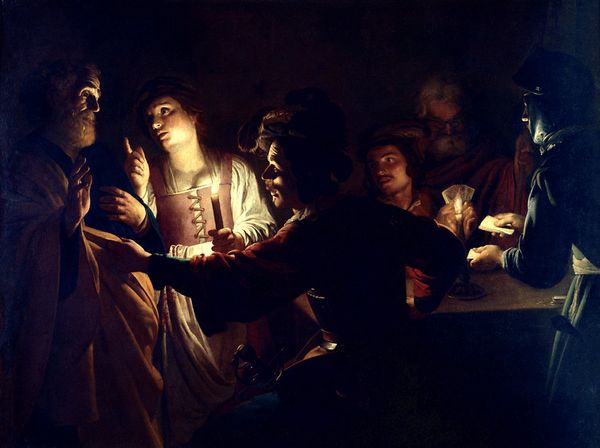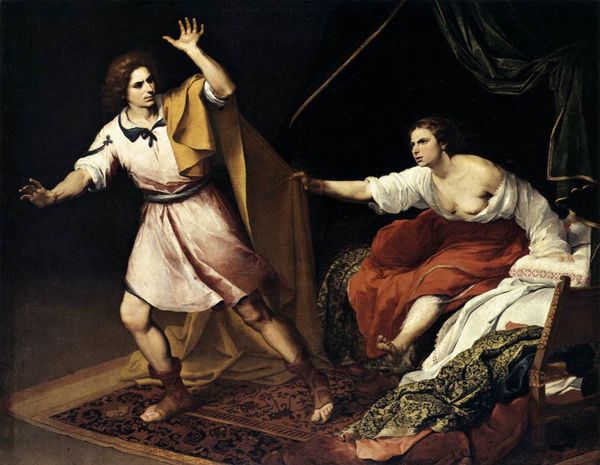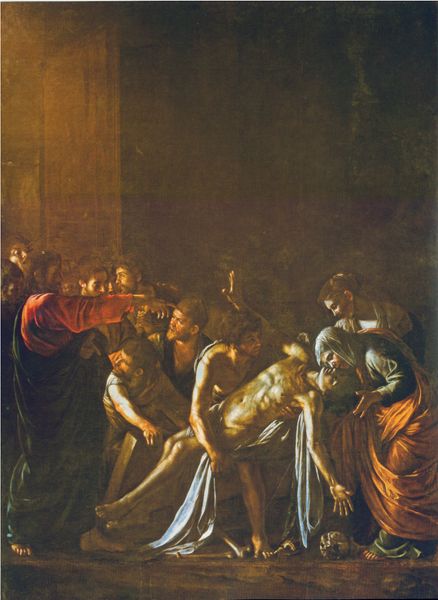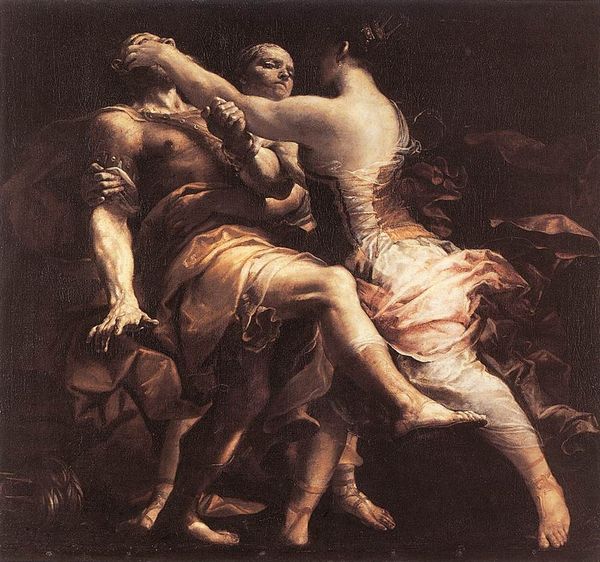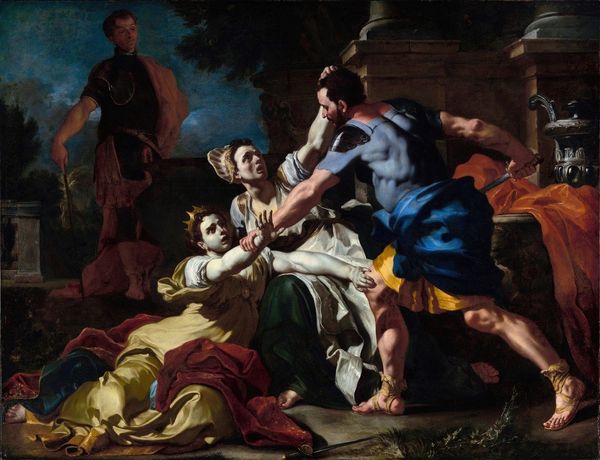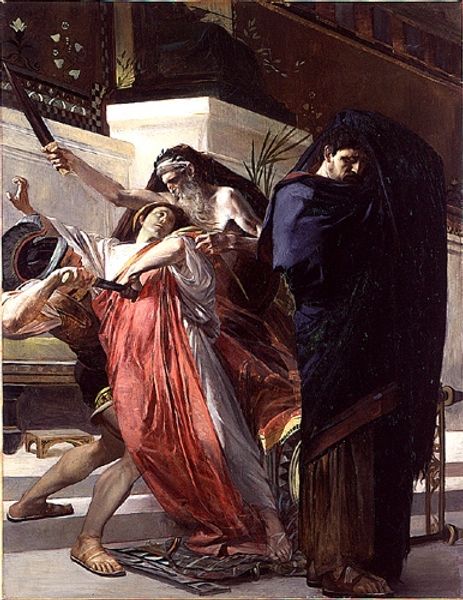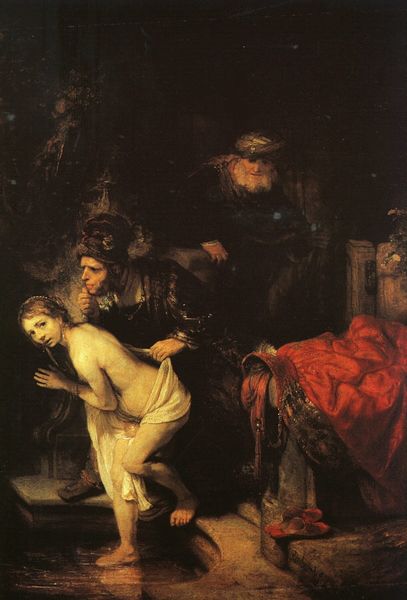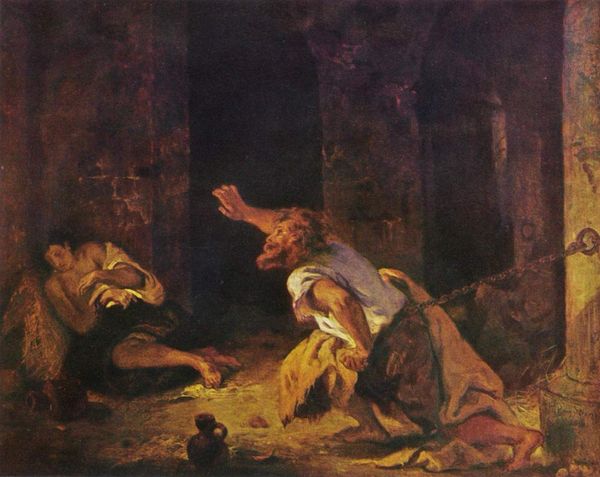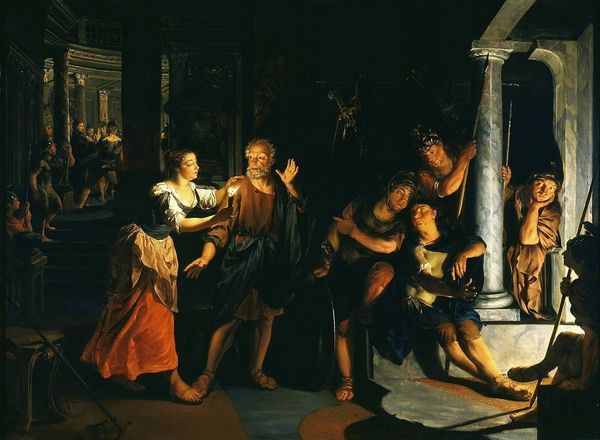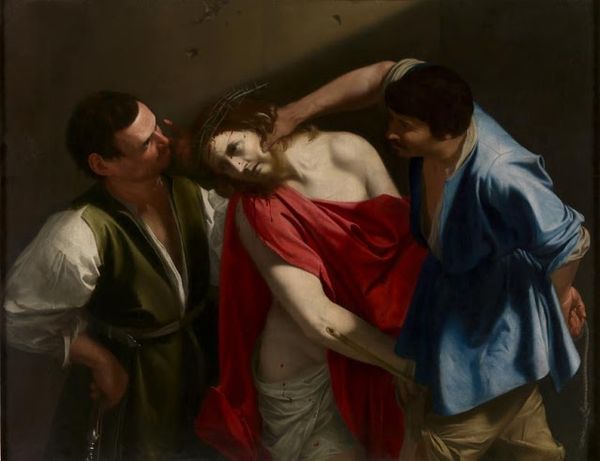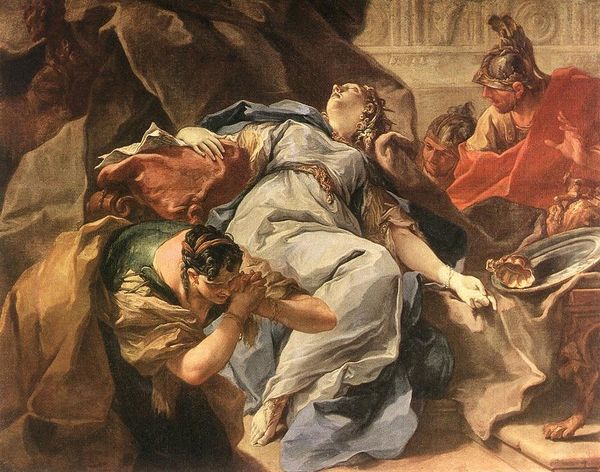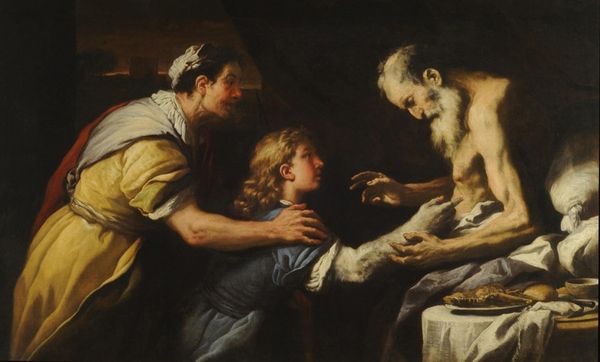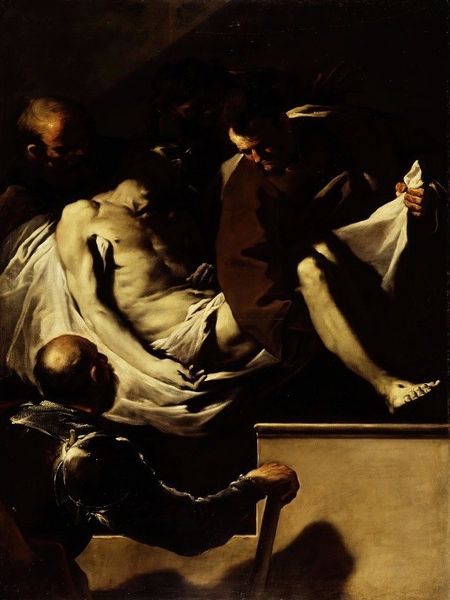
painting, oil-paint
#
portrait
#
baroque
#
painting
#
oil-paint
#
oil painting
#
chiaroscuro
#
history-painting
#
portrait art
#
fine art portrait
#
angel
Copyright: Public domain
Curator: Gerard van Honthorst's “The Liberation of Peter,” created in 1618, captures a biblical scene rendered in oil on canvas. What strikes you upon seeing this? Editor: The most immediate impression is the drama of the chiaroscuro. The intense contrast between light and shadow focuses our eye and infuses the scene with a sense of the miraculous. Curator: Absolutely. Honthorst uses light here not merely as illumination but as a compositional tool. Note how the angel radiates, providing the main light source, strategically positioned to highlight Peter’s bewildered reaction. It's a fascinating study in how to use the light's structure and dispersal within a scene. Editor: And it speaks volumes about the moment being depicted. The angel is traditionally a symbol of divine intervention, hope, and salvation. The bright light emanating from the angel suggests not only the miracle of Peter's liberation, but a larger symbolic liberation from spiritual darkness. I wonder if the chain and Peter's placement hint that something more important than a single person is freed at the same time. Curator: Considering the baroque style, it’s easy to read it as a complex staging of pictorial elements rather than something with the weight of the biblical canon. Peter's robe, look at the rendering! Observe the textures, folds, and light reflecting off it; so much virtuosity here, using material structure and depth to push the baroque style. Editor: It goes beyond mere display, though. The chains, clearly meant to confine Peter, are almost incidental. The light dismisses them, indicating their powerlessness. Curator: A masterful juxtaposition of physical restraint against the unbound power of the divine as conveyed through light itself. A perfect lesson in applied aesthetics. Editor: Indeed. This artwork has sparked an awareness of the chains, the darkness we might all strive to leave behind. The symbolism offers us a beacon towards a higher level.
Comments
No comments
Be the first to comment and join the conversation on the ultimate creative platform.
